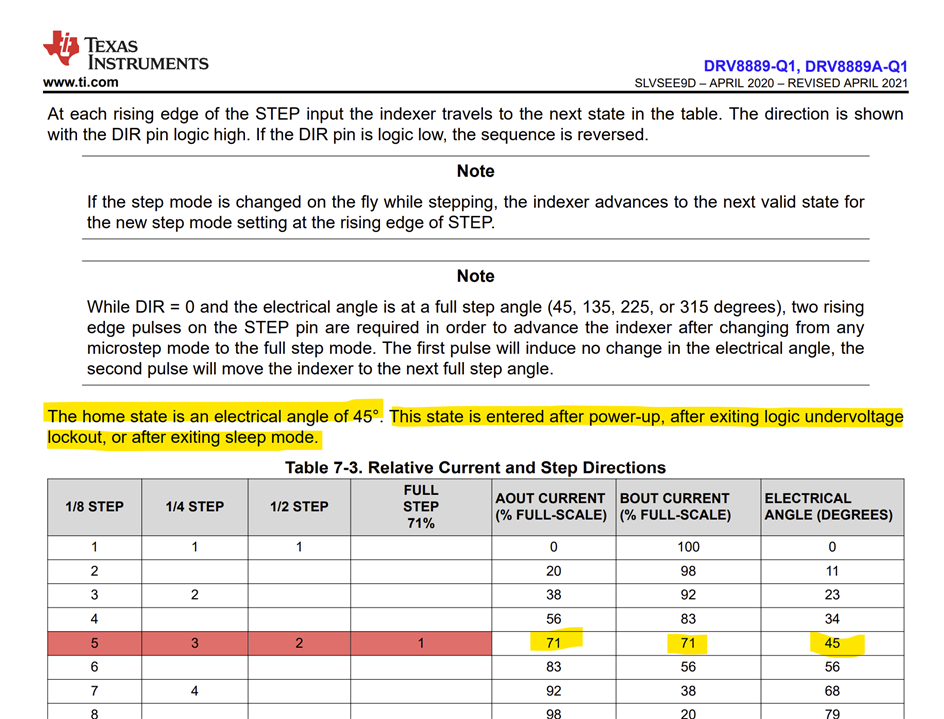Tool/software:
Hello, I'm running a step motor by manufacturing a PCB using DRV889 products.
But I'm worried because of the frequent degeneration phenomenon.
I describe it as the time required to drive the motor by not giving a signal to the STEP pin but only giving a current by sending it to ENABLE before driving the motor.
I give this time to 30ms short and I'm running the motor by activating the step pin. Repeat the normal rotation > stop > reverse rotation > reverse rotation for a short time.
Does it help to drive the motor if you don't activate the STEP pin and only activate the ENABLE pin for a short time? If so, is there an appropriate time??
Most of the values are being used as default values with SPI, and only current is limited SW.


